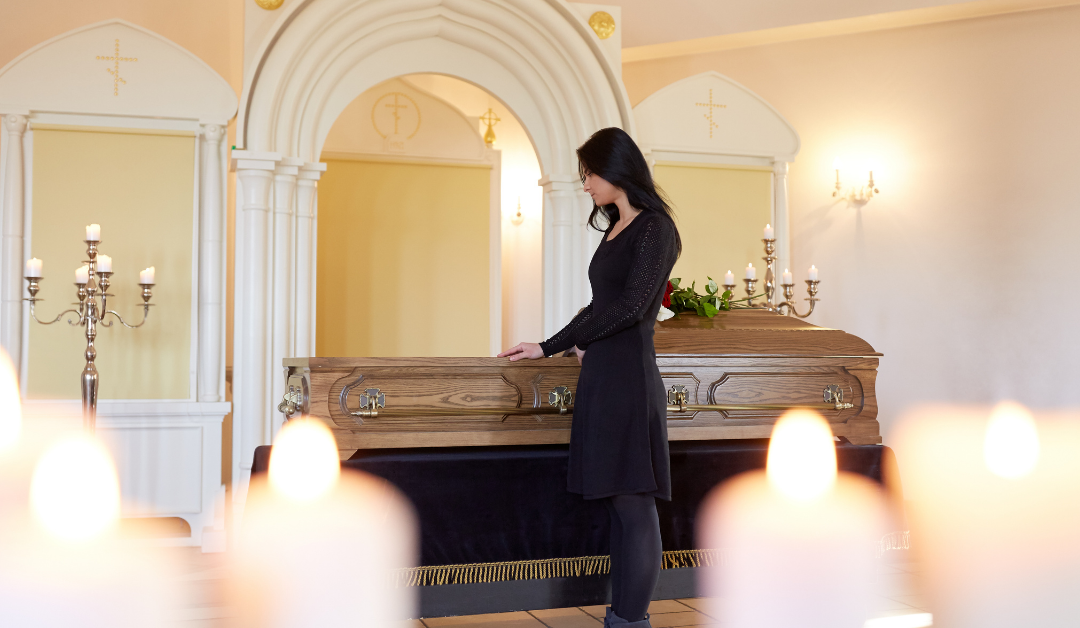When a loved one has passed away, you may wish to attend one or more gatherings to say goodbye and pay your respects. Beyond the traditional funeral, there are two additional ceremonies available for you to attend: a wake and a viewing or visitation. In this guide, we’ll cover the differences between the three services and what to expect at a viewing, wake, and funeral service.
What is the Difference between a Viewing, Wake, and Funeral?
A traditional funeral service is a formal event that allows friends and family a way to celebrate and honor the life of a loved one that has passed. Traditional funerals are typically presided over by a celebrant, a hospice chaplain, or an officiant of a church. The casket or urn is usually present, and the service can include eulogies, songs, and readings such as poems, verses, or favorite quotes.
A viewing, or visitation, is generally an informal gathering of friends and family where visitors can pay their respects to the deceased. Visitations often have an open casket or the urn present and can take place before the funeral, sometimes the day before or the day of the funeral.
A wake is a Catholic ceremony and is similar to a viewing or visitation in that it provides mourners the opportunity to offer their condolences and share their grief in an informal environment. The wake may include a vigil, which is a prayer service usually held the evening before the funeral. Family and friends gather in the home of the deceased, in the funeral home, or in the church to pray and remember the deceased. A priest or deacon usually presides over the prayers, though a layperson with knowledge of the prayers and traditions may preside in the event that a priest or deacon is not available.
Where are services held?
Funerals may be held at a funeral home, or at a church or a temple. Viewings, visitations, and wakes can also be held at a funeral home or a place of worship, or even in a private home. The location will generally be noted on the funeral announcement.
When to arrive?
Make sure you know when the service is scheduled to begin; you don’t want to show up too early or late. If you’re unsure of when the service begins, the scheduled time may be listed in the obituary, or you can call the funeral home or the host, if the service is held in a private home, to find out. Stop by as it makes sense for your schedule, making sure to give yourself enough time to pay your respects to the deceased and speak with the family.
What to do when you arrive?
Try to visit each family member to share your condolences. If you’re meeting for the first time, be prepared to introduce yourself and share how you knew the deceased. You may also want to prepare a few stories or memories of the deceased to share with family and friends.
Depending on the service, an open casket or urn may be present. It is your choice whether you’d like to spend a moment at the casket or urn for a final goodbye, as this may help provide closure.
What to wear?
First, you’ll want to consider the dress code of the location of the service, as you’ll want to be respectful of the location’s rules and guidelines when it comes to attire. If you’re attending a funeral, one of our biggest tips is to dress conservatively. This means choosing clothing with muted colors, high necklines, and wearing appropriate shoes. Above all, you don’t want to stand out and distract attention away from the deceased.
Visitations and wakes are more informal, so you’ll be fine wearing business or business casual attire. Just remember to show respect to the grieving family and avoid wearing anything too casual, such as jeans or shorts.
What to say?
It can be difficult to know what to say to a grieving family at a funeral, viewing, or wake, but it’s best to offer your sympathies and condolences to the family. If you’re at a loss for words, simply saying “I’m sorry for your loss” is appropriate.
Flowers or donations?
The funeral announcement may list the family’s preferences on flowers or if they’d rather have people donate to a charity. Above all, it’s important to respect the wishes of the family. If you do send flowers, be sure to do so before the service. You don’t want to give the family another thing to handle on such an emotional day.
We hope these tips have helped prepare you for your next funeral, wake, viewing or visitation service. If you still have questions or are in need of grief support, reach out to our team. We are available to provide you the help and support you deserve.

